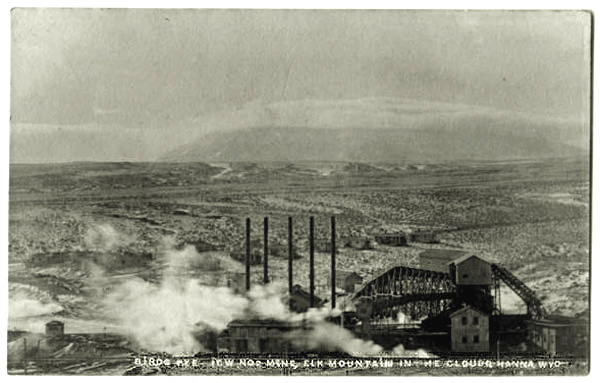
Birds eye view Hanna Mine No. 2, Cloud shrouded Elk Mountain in the distance, undated
The houses immediately after the mine in the above photo appear to be
part of a separate town in which Japanese miners lived. It was located just south of the No. 2 Mine.
It was common practice in various coal camps throughout the west, to have separate towns for different nationalities. A separate town
was also set aside for Japanese in Superior. "Finn towns," as an example, were common in mining camps throughout the west. See generally,
Koivukangas, Olavi: "What is a Finntown?", Siirtolaisuusinstituutti, Migrationsinstitutet-
Institute of Migration (2004).
Mine 2 originally was opened in 1889, but closed in 1891. It reopened for two month in 1895 after a fire in Mine No.
1. It again reopened ten year later. It finally closed in 1934. Following the 1908 explosion, the principal mines were Hanna No. 2, Hanna No. 3 opened in
1905 and Hanna No. 4 also opened in 1905.
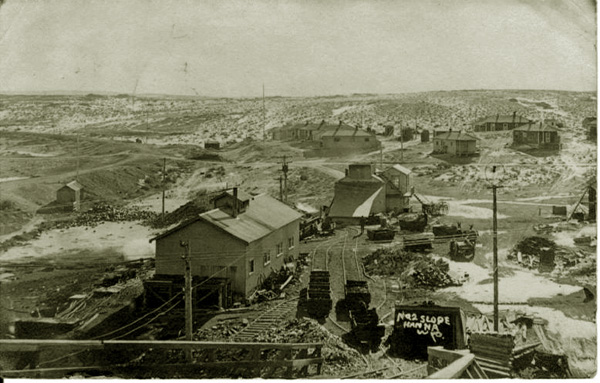
Hanna Mine No. 2 Slope.
Following the 1908 explosion, the principal Hanna mines were Hanna No. 2, Hanna No. 3 opened in
1905 and Hanna No. 4 also opened in 1905.
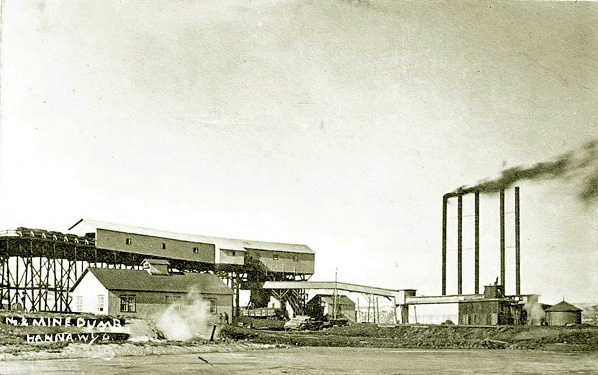
Hanna Mine No. 2 dump.
The dump is where waste from the opening of the mine is placed. In open pit mines it is where the overurden is placed.
In underground mines such as Hanna No. 2, the rock and other non-productive materials are placed in the dump. Care in the placement of the dump is
necessary to avoid contamination, have short haulage distances and to avoid spontanious combustion. In open pit mines, the waste in the dump is
eventually put back to restore the land. For outline of dump safety see generally Mine Safety and Health Administration Handbook PH01-I-6 (2001)
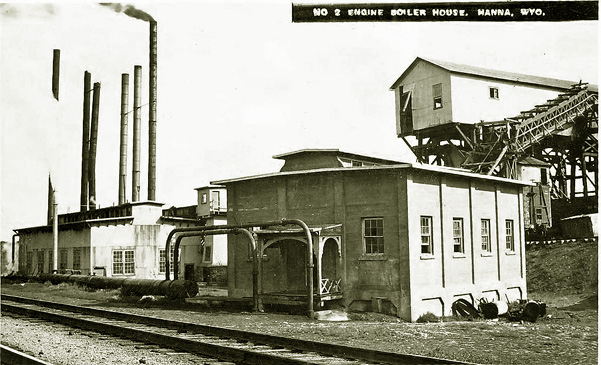
Hanna Mine No. 2, boiler house.
Boilers were required to power pumps, hoists, and other machinery required for operation of the mine. In 1912, the Union Pacific Coal Company converted
much of the equipment to electicity and placed electric drills and locomotives into service.
Prior to the electic locomotives, mules were required to move the pit cars.
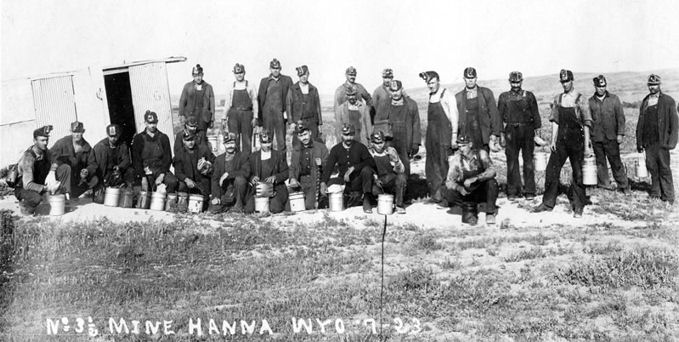
Unidentified miners, Hanna Mine No. 3 1/2, undated.
Mine No. 2 closed in 1920. Mine No. 3 1/2 opened in 1911 and closed in 1925.
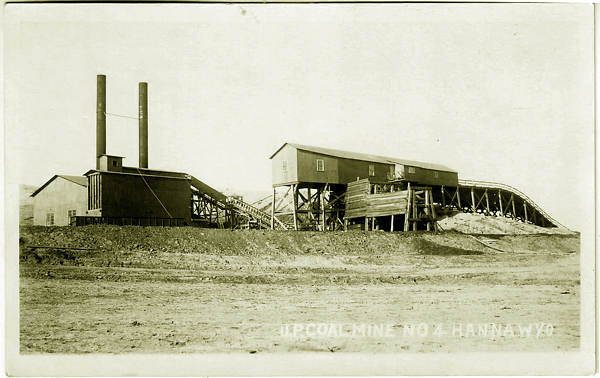
Hanna Mine No. 4.
While following the closure of Mine No. 2 in 1934, other mines such as Mines No. 5 and 6, Mine No. 4 remained the principal mine in Hanna
until it too closed in 1944 and was replaced by Mine No. 4A.
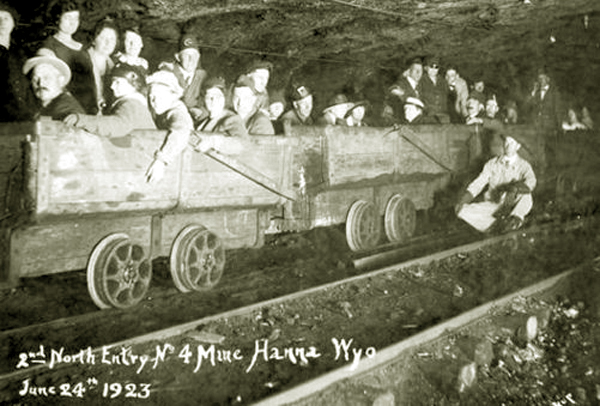
Hanna Mine No. 4. entry, 1923
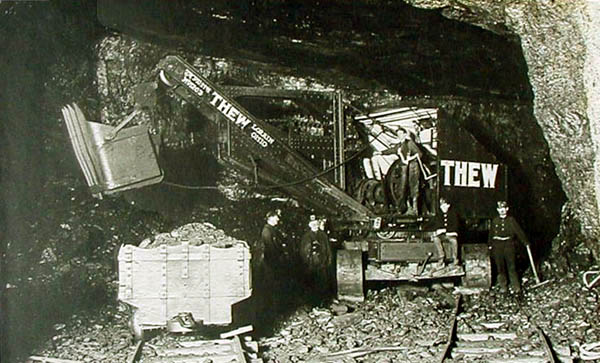
Use of a Thew Automatic Shovel to load pit cars, approx. 1923.
The Thew Loader was manuafactured by the Thew Shovel Company. Captain Richard Thew was the captain of
a Great Lakes carrier and observed difficulties in using conventional steam shovels in unloading ore.
He designed a fully revolving power shovel. About 1924, the shovels were marked as "Lorrain" after the place of
manufacuture. Thew is now a part of the Terex Corporation.
Next Page: The end of mining in Hanna.
|